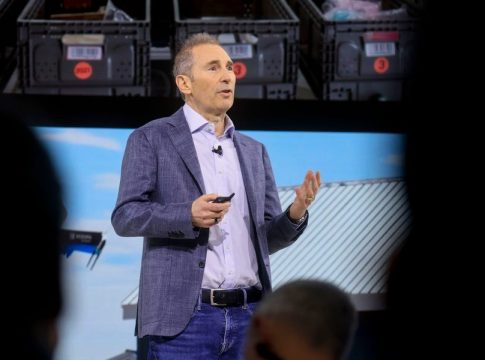Amazon’s AI Ambitions: Workforce Repercussions and Employee Concerns
The Shift Towards Automation
Amazon’s CEO, Andy Jassy, recently shared insights with employees about the company’s future plan that prominently features artificial intelligence (AI). During a recent all-hands meeting, Jassy emphasized the efficiency gains from AI, predicting a significant reduction in the white-collar workforce over the next few years. This message sparked considerable unrest among employees who fear job losses and challenge the implications of relying on AI for productivity.
Employee Backlash: A Discontented Workforce
Internal reactions to Jassy’s announcement were swift and vocal. Employees took to Amazon’s internal Slack channels to express their concerns, accusing leadership of lacking a coherent vision beyond cost-cutting through automation. Some employees articulated a strong desire for a shift in the company’s perspective, arguing that AI should be viewed as a partner rather than a replacement. Phrases like "real consequences" echoed through their exchanges, highlighting fears of decreased job security and the potential for poor decision-making driven by AI.
Employees pointed out that while technological advancements can lead to impressive productivity boosts—around 50% in some estimates—they present two choices: trimming the workforce or maintaining staffing levels to foster growth. Amazon appears to be leaning towards the former, prompting many to question whether this aligns with the company’s renowned culture of innovation and customer obsession.
A Critical View on Leadership Decisions
While some employees acknowledged the potential for streamlining management roles through AI, many criticized Jassy’s emphasis on a leaner workforce. Remarks about management expansions under his leadership further fueled skepticism, with employees wondering whether the proposed cuts would disproportionately impact lower-level employees while leaving senior management untouched.
A prominent theme throughout the discussions was the apprehension around AI’s reliability. While some believed that AI tools could enhance productivity, others warned about the risks of making poor decisions based on faulty AI-generated insights. The sentiment ranged from a desire for stability to a call for constructive dialogue with higher-ups regarding the future direction of the company.
Broader Implications for the Workforce
This situation at Amazon is not merely a localized issue; it reflects a broader trend across industries as businesses increasingly turn to AI to optimize operations. The fear of job displacement driven by automation isn’t unique to Amazon but resonates with many sectors—sparked by earlier technological shifts, such as the introduction of robotics in manufacturing.
With the recent hiring freeze in Amazon’s retail division, employees remain vigilant about their job security, indicating that this conversation will likely continue to unfold. Reflecting on Amazon’s value system, there appears to be a need for a redefinition—how can the company balance technological advancement with employee well-being?
As the landscape of work continues to evolve with AI at the forefront, the ongoing discourse at Amazon serves as a case study in the necessity for clear communication and thoughtful strategy in implementing cutting-edge technologies. The challenge for companies like Amazon will be to harness AI’s potential while ensuring that they cultivate a workplace where employees feel secure, valued, and motivated to contribute to innovation.

Writes about personal finance, side hustles, gadgets, and tech innovation.
Bio: Priya specializes in making complex financial and tech topics easy to digest, with experience in fintech and consumer reviews.

